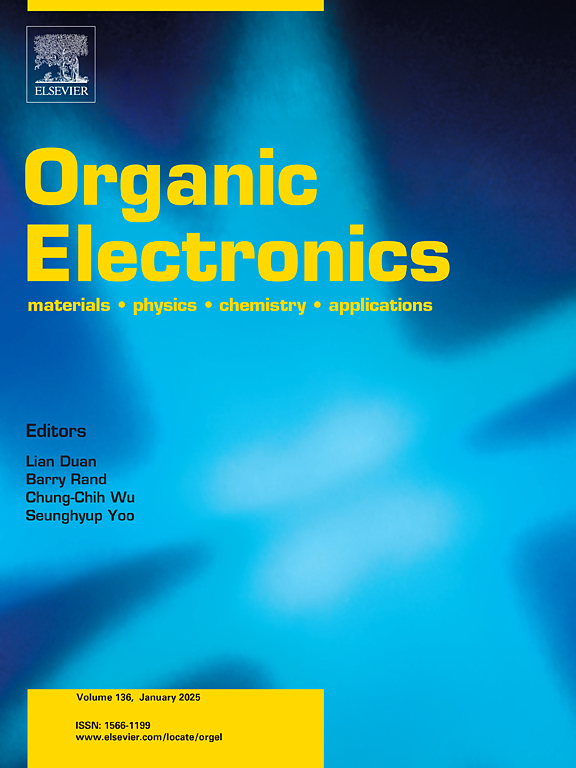基于机器学习的苯二噻吩基聚合物的快速紫外/可见辅助设计,以预测其对光伏的光吸收
IF 2.7
4区 工程技术
Q3 MATERIALS SCIENCE, MULTIDISCIPLINARY
引用次数: 0
摘要
随着全球能源需求的升级,通过加速设计方法开发高性能光伏(PV)材料势在必行。机器学习(ML)辅助预测模型用于加速基于苯二噻吩(BDT)的聚合物的PV应用的设计。目前的方法利用了191种化合物的实验紫外可见光谱数据集,通过RDKit映射到分子电子描述符。随机森林模型为预测它们的最大吸收(λmax)提供了一个预测框架(R2 = 0.98)。在此之后,他们的5000种新设计作为新型聚合物,确定了合成可达性可能性指数得分高达57分的最佳表现,确保了合成的可行性也被设计出来。特征重要性分析强调了MaxPartialCharge和芳香环是关键的描述符。所设计的材料具有最佳的能隙(1.35-2.0 eV),为高效光伏器件铺平了道路。对预测最佳聚合物的紫外可见光谱进行了计算,其λmax范围为487 ~ 987 nm,表现出明显的红移行为。所设计的聚合物具有良好的应用前景,是有机太阳能电池的良好候选材料。本文章由计算机程序翻译,如有差异,请以英文原文为准。

A rapid UV/Vis assisted designing of benzodithiophene based polymers by machine learning to predict their light absorption for photovoltaics
As global energy demands escalate, developing high-performance photovoltaic (PV) materials through accelerated design methodologies is imperative. A machine learning (ML) assisted predictive models are used to accelerate the design of benzodithiophene (BDT)-based polymers for their PV applications. The current approach leverages a curated dataset of 191 compounds with experimental UV–Vis spectra, mapped to molecular electronic descriptors via RDKit. Random Forest modeling yields a predictive framework (R2 = 0.98) for predicting their maximum absorption (λmax). After it, their 5000 new designs as novel polymers, identifying top performers with Synthetic Accessibility Likelihood Index scores up to 57, ensuring synthesis feasibility have also been designed. Feature importance analysis highlights MaxPartialCharge and Aromatic rings as crucial descriptors. The designed materials exhibit optimal energy gaps (1.35–2.0 eV), paving the way for efficient PV devices. The computed UV–Vis spectra of best predicted polymers are studied with their λmax range of 487–987 nm showing a significant redshift behavior. The designed polymers presents and good potential towards and they can be good candidates for organic solar cell applications.
求助全文
通过发布文献求助,成功后即可免费获取论文全文。
去求助
来源期刊

Organic Electronics
工程技术-材料科学:综合
CiteScore
6.60
自引率
6.20%
发文量
238
审稿时长
44 days
期刊介绍:
Organic Electronics is a journal whose primary interdisciplinary focus is on materials and phenomena related to organic devices such as light emitting diodes, thin film transistors, photovoltaic cells, sensors, memories, etc.
Papers suitable for publication in this journal cover such topics as photoconductive and electronic properties of organic materials, thin film structures and characterization in the context of organic devices, charge and exciton transport, organic electronic and optoelectronic devices.
 求助内容:
求助内容: 应助结果提醒方式:
应助结果提醒方式:


